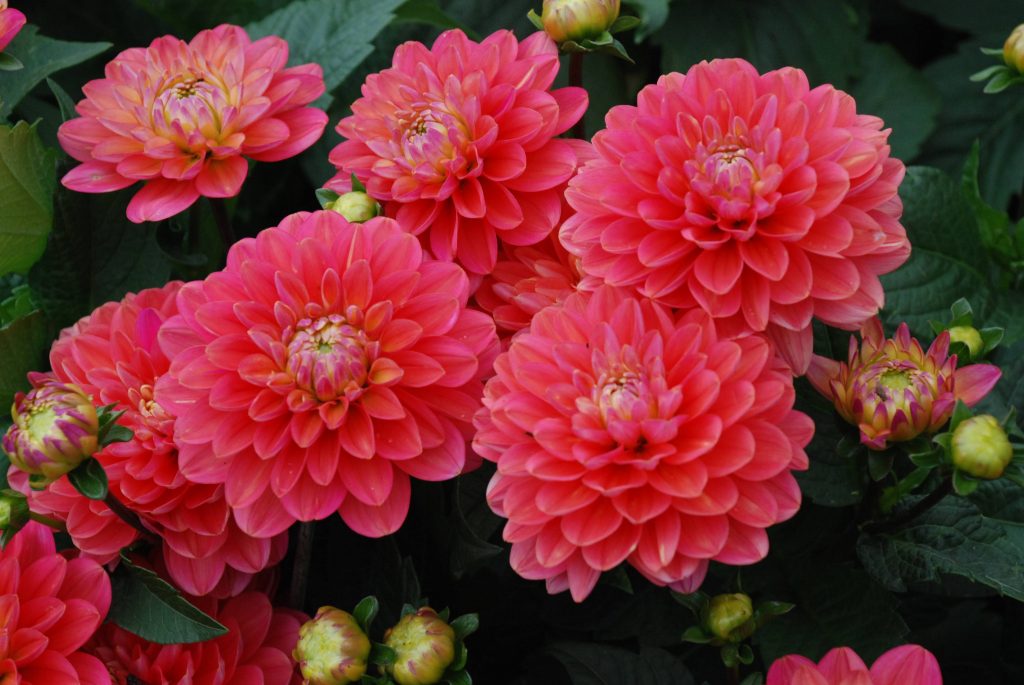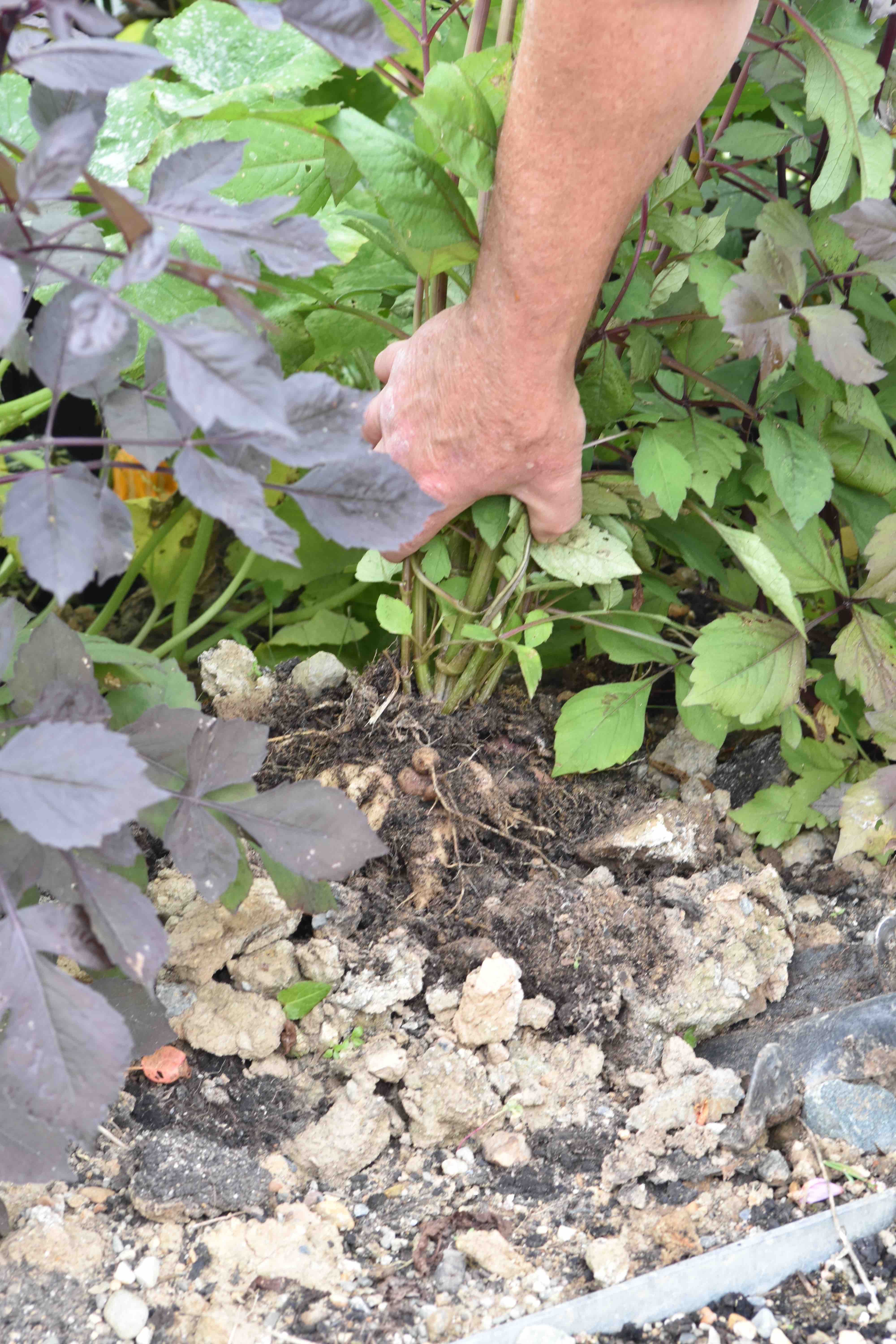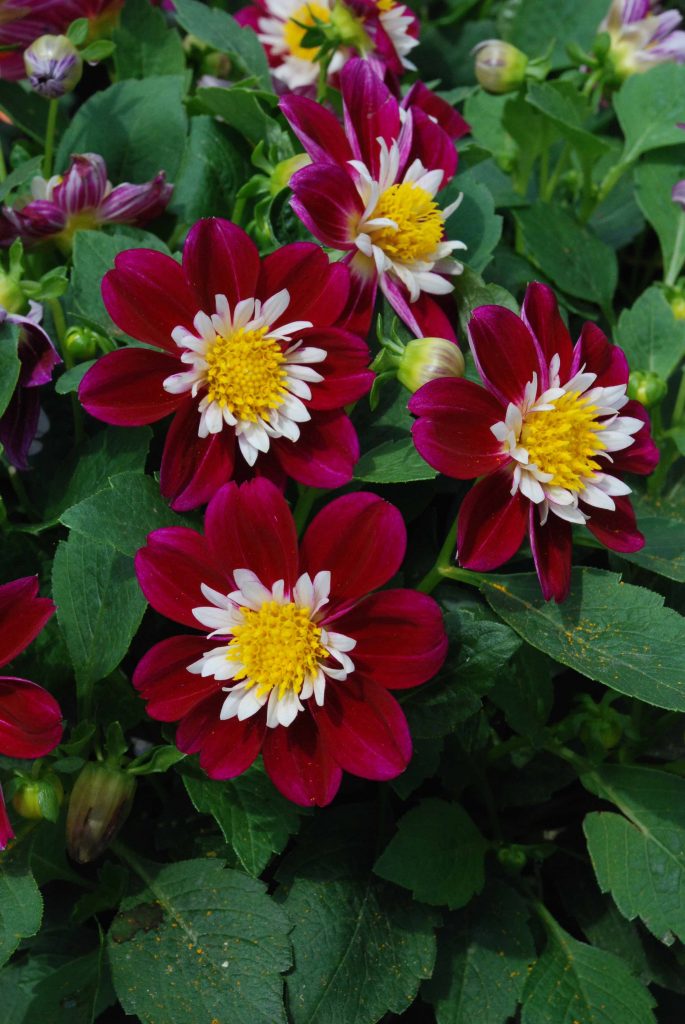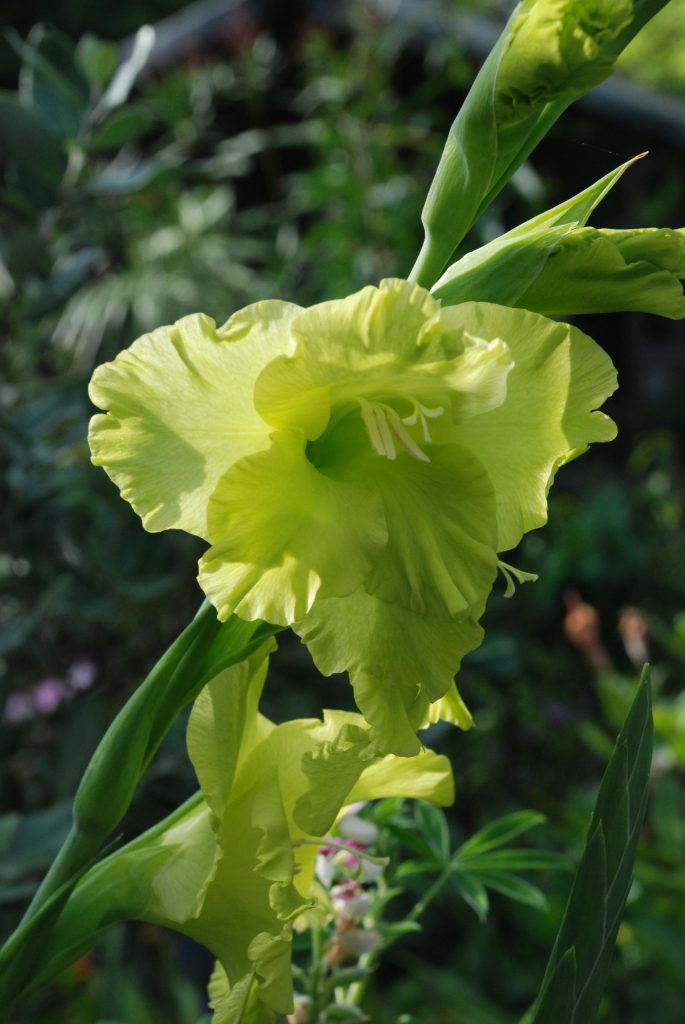
It is that time of year when the last of the summer flowers are over and we need to prepare for winter. Tender plants should be in the greenhouse and we can cut down all but the last of the herbaceous flowers. And with frosts imminent, we need to decide on what plants to dig up and protect from frost.
It is always a gamble, predicting when the first autumn frost will strike. It is, at least, easier than trying to decide which is the last frost of spring. It always makes me want to scream when I read about planting out tender plants in spring after the last frost! How are we supposed to know when that will be? Of course we have to make an educated guess and keep our fingers crossed.
Read any book that is more than 30 years old and it will say that dahlias need to be lifted and stored, dry, over winter. But with (generally) milder winters and a rather more relaxed attitude, many gardeners find that dahlias will survive winter if left outside. So what to do?

Dahlias are usually lifted when the first frost has blackened the foliage. All parts of dahlias are killed by frost. Dahlia tubers survive in the ground because the soil insulates them and stops them from freezing. However, if they are in pots frost can get at them. To complicate things a bit, the tubers of dahlias do not sprout – it is shoots at the base of the stem that regrow. And these are at the upper part of the tubers. When you buy or save tubers it is the health of these shoots, not the weight of all those tubers, that affect the size of the plant.
So, to protect the tubers, you can mulch the plants in winter – after cutting them back. Straw or loose bark or compost all work. Unfortunately these all encourage slugs and it is slugs in spring, eating the new shoots, that often destroy the plants. But a mulch should protect the tubers from frost in all but the coldest areas.
Of course, another consideration is where you will store your tubers if you do dig them up. After lifting them, the tubers should be dried off, often upside down, in a frost-free place. Then the soil can be shaken off, taking care not to break the tubers, which can cause rot. The old stems are cut back to about 8cm and then they can be stored in straw or paper, in a cool, but frost-free place. They need to be checked every month to make sure they are not rotting or sprouting. And then, in March, you can pot them and start them into growth.

A big advantage of lifting the tubers is that you can divide them or even take cuttings in spring so you can make more plants.
Decisions, decisions!
This is also the time to lift gladioli. They usually survive if left in the ground, like dahlias, but the corms produce masses of tiny cormlets and they can get crowded and fail to bloom if not lifted now and then. One key point – a new corm forms on top of the old corm each year. When you lift them, keep the upper corm and throw away the old, withered corm.

Jobs this week
This is the perfect time to plant shrubs and trees and hedges. Bare-root trees and shrubs will be available next month. Prepare the soil for planting by digging it over, mixing in lots of organic matter.
Collect leaves and add to the compost heap along with all the bedding plants that have been pulled up
It is the last chance to plant garlic for crops next summer